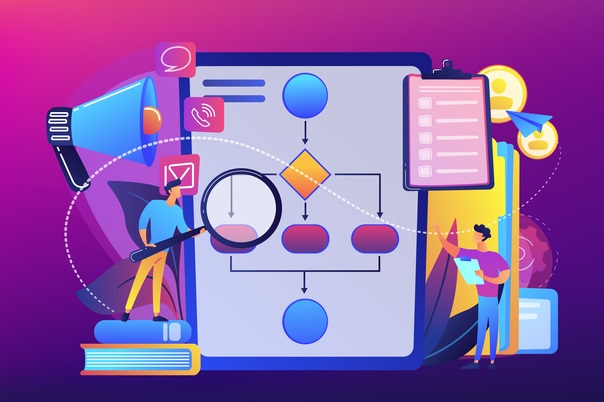Agents Need Better ‘Intent Data’ to Deliver Personalized CX

By: Ilya Filipov
Insurance agents have been steadily embracing consumer data, analytics and artificial intelligence (AI) to become more sophisticated, personalized and precise on the operational side of their business. This helps agents understand customer behaviors to enable them to adjust coverage, rates and discounts, and drive risk assessment and risk avoidance programs.
But within sales and marketing, customer prospecting and communications strategies look a lot like they did 10—or even 20—years ago.
There’s no replacing good old-fashioned human interaction. But there’s a tremendous amount of unrealized opportunity for agents to dig deeper, make connections with customers and prospects more personal and relevant, and deliver personalization at scale.
As independent agents seek to grow their business, bring on more clients and sell more policies, adopting a data-first mindset across the customer experience (CX) is key.
Seeing the Full Picture
More insurers now use customer relationship management (CRM) software capabilities to capture and analyze customer data. This function may be part of the agency management system (AMS) or a standalone tool like Salesforce, but these tools only capture data on a customer’s direct interaction with an insurer. They don’t provide data on behaviors that may be indicative of a new or changing insurance need.
Without this broader insight, it’s difficult to fully understand and anticipate when to proactively reach out to a customer or prospect, what materials to send, or which services to promote. Agents need to tap into external data streams to gain vital insights into customer journeys to act on reliable signals of intent.
For example, integrating third-party data with internal CRM data can allow an insurer to see which customers are shopping around for home insurance. Other third-party data streams can help identify life events that present critical points in the customer journey: from selling a house or buying a car to the birth of a child or college graduation. These are insights insurers crave because they indicate a need for car, home or life insurance. Today, insurance agents rarely get these insights at scale.
Making Data Make Sense
An abundance of data can quickly become daunting and create excess noise—unless there’s a good way to sort through it and elevate relevant insights. Tools have become available that use some level of analytics, AI and machine learning to make sense of customer behavior data, such as risk assessments. However, that’s not enough.
We need to apply the same data intelligence tools on the sales and marketing side of the business. This means giving teams purpose-built analytics that makes raw data meaningful by turning it into usable customer intelligence.
This looks like recognizing the most relevant intent signals that indicate the moment a prospect or customer is ready to make an insurance-related decision, surfacing the best prospects and high-priority leads, and automatically routing them to available agents to reach out at the right moment when it can create the greatest impact.
Scaling Personalization
It is also not enough to just see an insight, like a life event or intent signal. Agents need to take prompt action to capture the opportunity and make a genuine, timely connection. And scaling this kind of personalized engagement is what drives measurable growth.
Automation technology can speed up the ability to do this at scale and guide agents through the sales and marketing action. For example, once an opportunity is available, what is the next step? Do they call? Send an email? How many emails? What materials should they send?
Giving agents pre-built journeys can automatically orchestrate multi-channel communications driven entirely by customer intelligence data. An intent signal or life event triggers a journey of emails and texts. This type of customer engagement creates a feedback loop that further refines customer intent, helps adjust messages accordingly, and ultimately alerts an agent when it’s the perfect time to reach out.
Extending Automated Journeys Beyond Prospecting
Landing a new insurance customer is expensive. So, agents need to make it worth the effort by maintaining engagement and upselling new policies.
The same kinds of pre-built, intelligently automated customer journeys can help with everything that comes after selling a new policy. Agents can leverage onboarding journeys to surround a new customer with helpful, personalized support without a heavy burden on the agent’s time. These journeys can provide new customers with useful information about their new policies, such as payment reminders or help setting up automated payments.
Real-time customer intelligence data can also be used to feed these always-on engagement journeys. And purpose-built analytics can surface key predictive indicators of customer needs, driving the right communications that help agents make the most of their current policy or products, and provide vital insights for cross- and upselling campaigns. These journeys help agents maintain consistent engagement to build trust and loyalty, and more importantly, signal when a customer is ready to take the next step.
Tech Is Supporting, Not Replacing, Human Connections
Despite musings that technology could lead to the “end of the agent,” consumers have made it very clear that they value real connections with human agents. Yet, more than ever they want information and guidance that are fully personalized and relevant to their specific needs in the moment, and they expect information to be shared with them across the channel of their choice.
Agents need to shift to tech-enabled strategies that use data, analytics and automation to support and enable—rather than replace—genuine human connections. This requires investment and accelerated adoption of the tech platforms and tools that can integrate data to achieve 360° customer visibility, unlock actionable intelligence with ready-to-use analytics, and put intelligence into action with purpose-built, automated customer communication journeys.
The most digitally sophisticated, tech-enabled agencies see 70% higher revenue growth than other agencies, according to Liberty Mutual and Safeco’s “2022 Agency Growth Study.” Agents who want to stay in the game must transform to deliver the perfect balance of human connection and tech-enabled experience that consumers expect.
Ilya Filipov is the general manager of insurance at Total Expert. In this role, he leads vertical growth and works directly with customers and prospects to address industry pain points.










